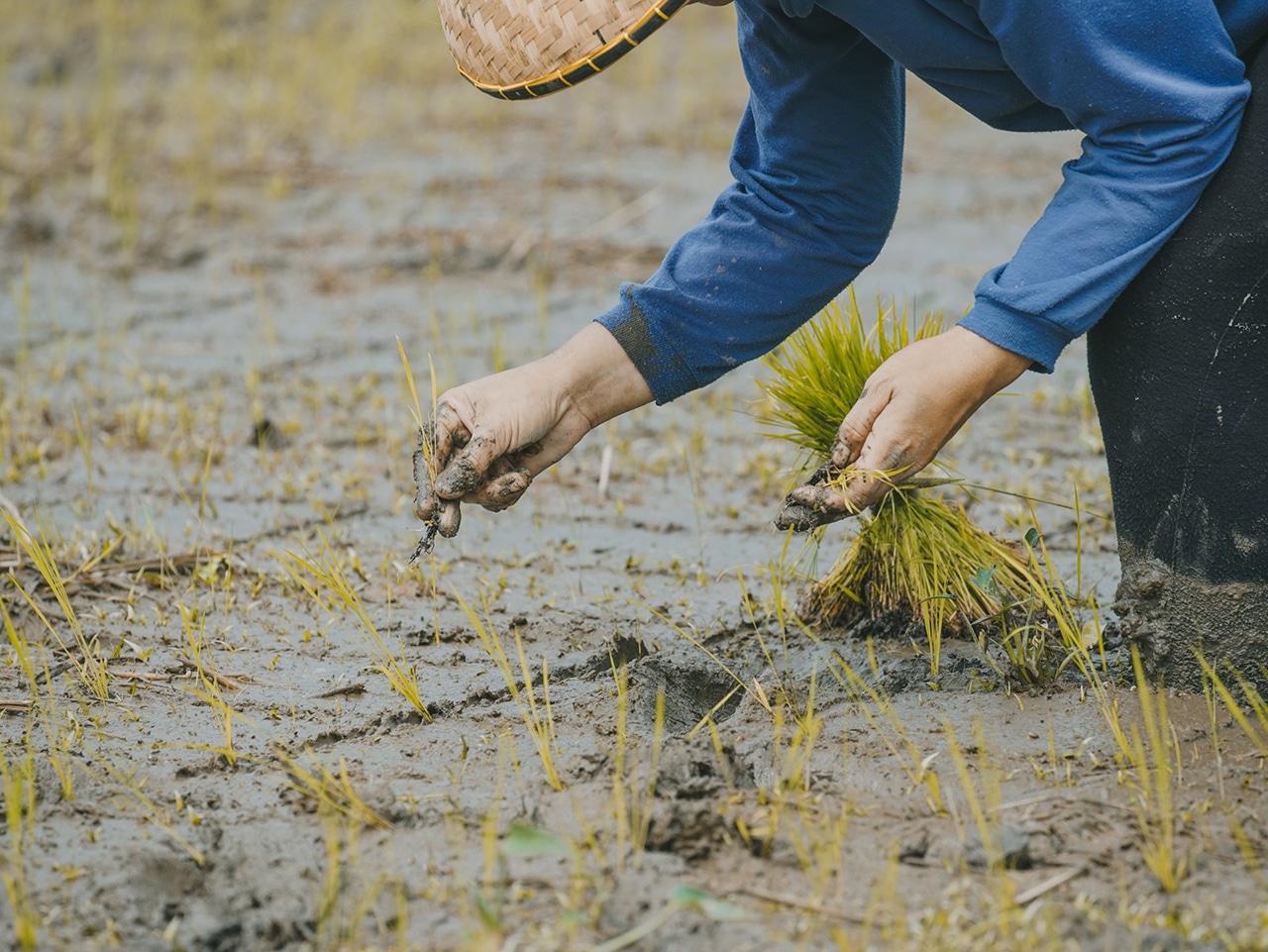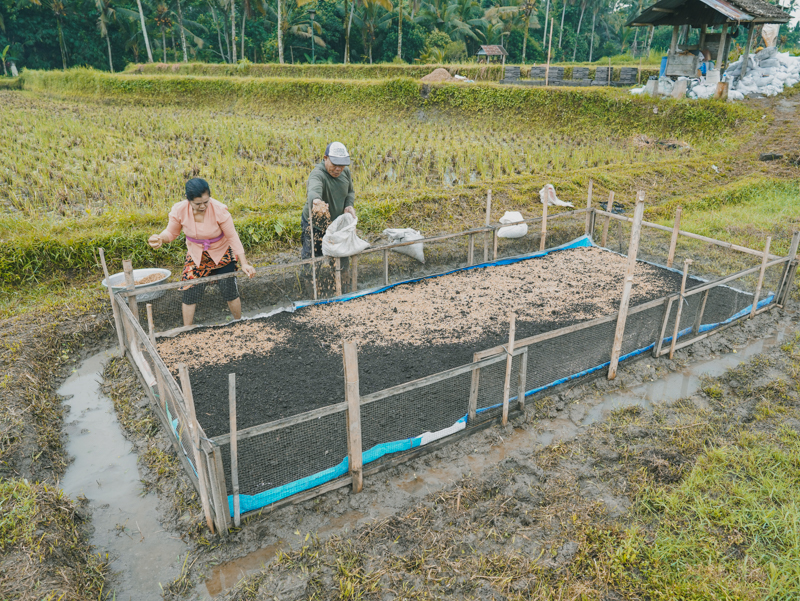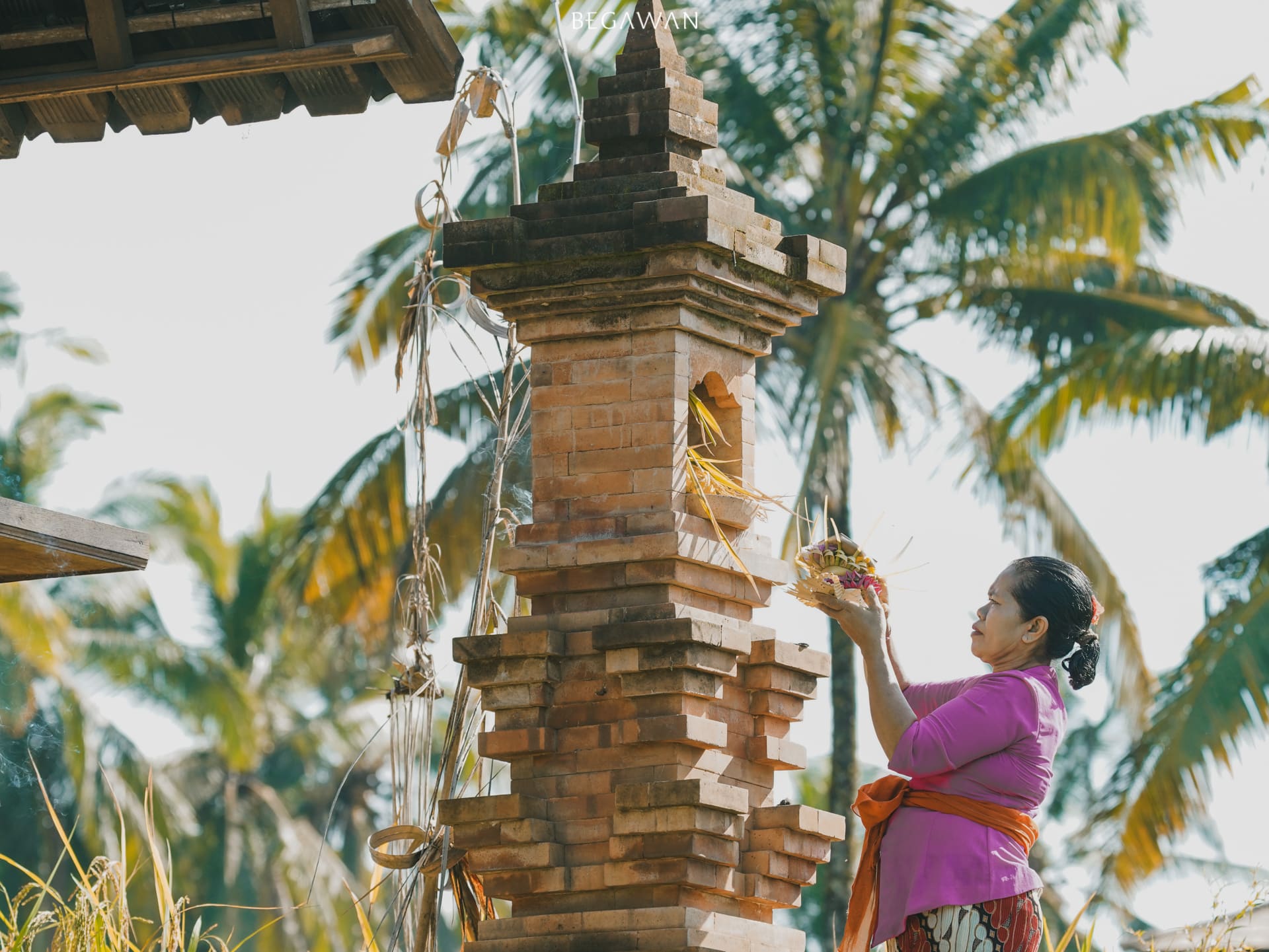
After the harvest, when the first cycle was complete, we resumed planting the Mansur heritage rice at the end of July. Begawan is implementing a regenerative farming system where soil and water are regenerated and protected from the chemicals that are generally used in hybrid rice fields.
As with the first cycle, a nursery bed was prepared for the seeds, using a tarp to prevent the seedlings’ roots from going too deep into the mud and damaging the roots when transplanted into the rice fields. In early August, the seedbed was ready to be sprayed with organic fertilisers containing various microorganisms to support the growth of the seedlings. Preparing the rice fields is equally important. We added a mixture of compost and sand and laid coco-peat over the seeds to keep them moist while protecting the microbes in the compost from direct sun exposure, reducing evaporation.

A few days later, the green rice seeds had sprouted, while the farmer ploughed the rice fields. On Wednesday, 3 August 2022 we started to move the 12-day-old seedlings from the nursery to the rice fields. The farmers planted 2-3 seedlings in one spot ready to replace with another seedling if one of them died. There is a 30 cm distance between each spot, with coco-peat added to enrich the soil and reduce weed growth.
The best news is that other local farmers have been inspired to join the program, switching from conventional farming to regenerative agriculture. We commenced with an area of 42.9 are, Begawan now aims to expand the rice fields to 1 hectare and contribute more to the community, especially local farmers in Melinggih Kelod. (Anna Gultom)




